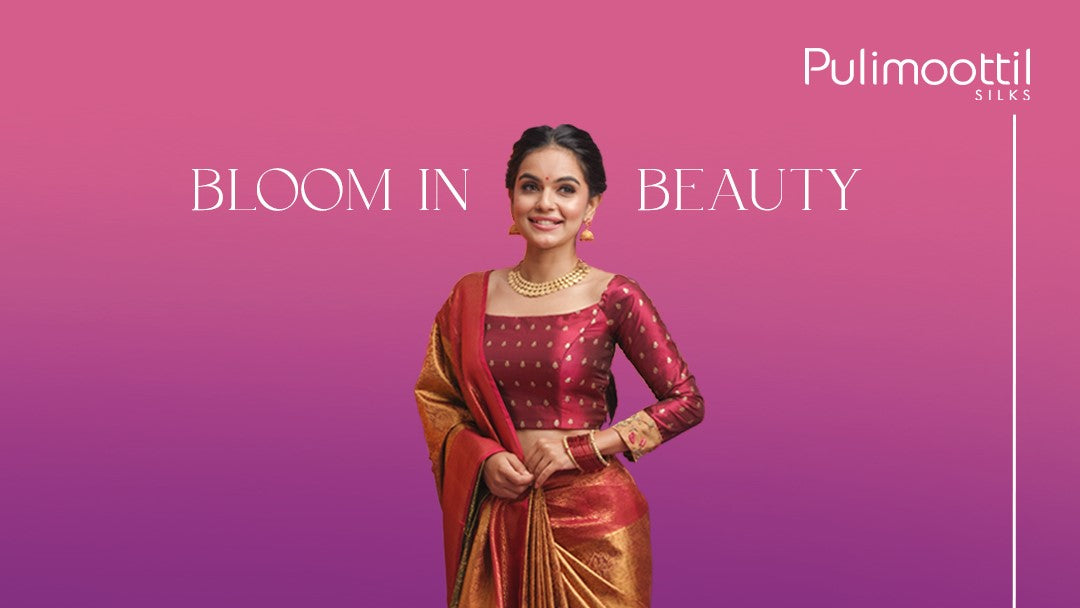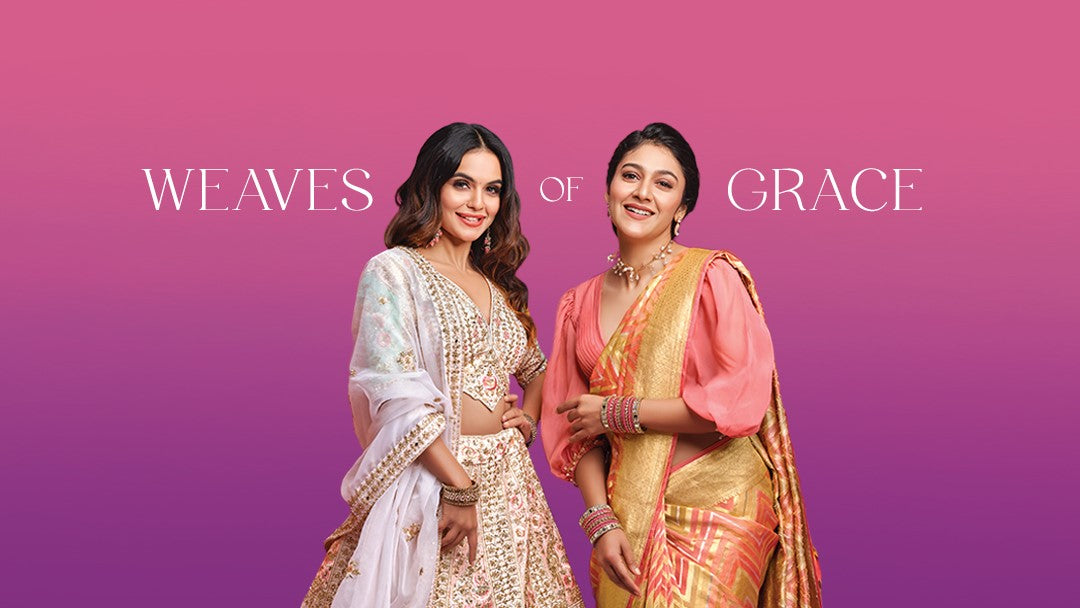
Sarees as Artistic Canvases: Hand-Painted and Hand-Embroidered Works of Mastery
Sarees, the timeless and iconic clothing of India, have consistently garnered acclaim for their adaptability and artistic essence. Throughout history, sarees have served as a medium through which numerous artists and craftsmen have channeled their creative ingenuity. Among the myriad techniques that have graced sarees, hand-painting and hand-embroidery emerge as exceptional means of artistic expression, elevating the saree to the status of a true masterpiece.
The Art of Hand-Painting on Sarees
Hand-painted sarees exemplify the intricate artistry attainable on fabric. These sarees frequently showcase breathtaking motifs and intricate patterns that resonate with India's rich cultural heritage. Various regions throughout India are renowned for their hand-painted sarees, each carrying its unique style and narrative.
One of the most renowned hand-painted saree traditions originates from the state of Madhubani in Bihar. Madhubani paintings also referred to as Mithila art, are distinguished by vibrant colors and complex patterns. Typically crafted by female artisans, these paintings employ natural pigments and brushes crafted from twigs, bestowing each piece with an exclusive rustic allure. Madhubani hand-painted sarees often feature themes from mythology, nature, and daily life.
Another noteworthy tradition is the Pattachitra sarees from Odisha, adorned with intricate scroll-like designs and vivid portrayals of mythological tales. Artists employ delicate brushes and natural hues to breathe life into these narratives on the saree's canvas.
Hand-painted Kalamkari sarees from Andhra Pradesh are highly coveted as well. These sarees frequently depict scenes from Hindu mythology and floral motifs. Kalamkari artists utilize a distinct pen-like instrument to create detailed designs, a painstaking process that can extend over weeks or even months.
The Art of Hand-Embroidery on Sarees
Hand embroidery on sarees represents another facet of artistic expression that demands exceptional skill and patience. Sarees enhanced with hand embroidery are cherished as heirlooms, often handed down through successive generations. India boasts diverse regional embroidery traditions, each distinguished by unique techniques and designs.
Zardosi embroidery, characterized by its utilization of metallic threads and embellishments, enjoys particular popularity in North India. This intricate embroidery entails the meticulous attachment of small metal pieces, beads, and sequins to the fabric. Zardosi work possesses the transformative ability to turn an ordinary saree into a dazzling masterpiece, frequently gracing bridal ensembles.
Chikankari, a delicate form of hand embroidery originating in Lucknow, is renowned for its understated elegance. Typically executed on lightweight fabrics like chiffon and georgette, Chikankari features intricate white-on-white embroidery that bestows an air of grace and sophistication to the saree.
Kantha embroidery, hailing from West Bengal and Bangladesh, is celebrated for its storytelling essence. Kantha sarees frequently showcase intricate narrative designs, with artisans employing running stitches to weave captivating tales into the fabric. This style of hand embroidery not only captivates the eye with its visual appeal but also resonates deeply with tradition.
Phulkari embroidery from Punjab is revered for its vibrant and daring patterns. The term "Phulkari" translates to "flower work," and it entails the use of colorful silk threads to craft geometric and floral designs. A well-executed Phulkari saree is a riot of colors and textures, making a striking statement.
The Saree: A Testament to Heritage and Artistic Excellence
Hand-painted and hand-embroidered sarees transcend their status as mere garments; they serve as potent symbols of India's profound cultural heritage and the remarkable skill of its artisans. These sarees are often meticulously crafted by talented craftsmen and craftswomen who have dedicated years to refining their art, preserving it over time.
The process of fashioning hand-painted and hand-embroidered sarees is a labor-intensive endeavor. It not only relies on the expertise of the artists but also on the contributions of those responsible for preparing the fabric and executing the finishing touches. This collaborative process underscores the communal essence of Indian artistry and underscores the imperative of safeguarding these time-honored traditions.
Furthermore, the appeal of these sarees extends far beyond the borders of India. They have garnered admirers worldwide who hold a deep appreciation for the artistry, intricate designs, and unwavering dedication involved in their creation. Numerous fashion designers have seamlessly integrated hand-painted and hand-embroidered sarees into their collections, infusing these traditional masterpieces with a contemporary and global allure.
Holding on to the legacy
Preserving the heritage of hand-painted and hand-embroidered sarees stands as a crucial endeavor, ensuring the longevity of these age-old traditions. Artisans and organizations committed to upholding traditional craftsmanship work tirelessly to provide support and platforms for these artists to showcase their skills.
The demand for hand-painted and hand-embroidered sarees continues to surge, not only within India but also among the Indian diaspora and a global audience. Consequently, these art forms are evolving to align with the evolving tastes of contemporary consumers while staying rooted in their rich traditions.
In summary, hand-painted and hand-embroidered sarees transcend their status as mere garments; they are a celebration of India's artistic and cultural legacy. Each saree is a unique masterpiece, a canvas narrating a tale, and a reflection of the talent and unwavering commitment of the artisans behind their creations. As these art forms adapt to the modern era, they continue to captivate and inspire, reaffirming that the saree indeed remains a canvas for timeless artistry.


